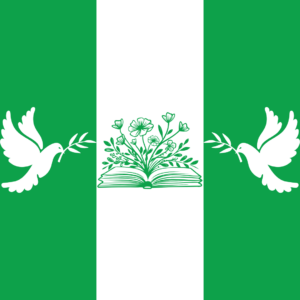
In the vast, undulating sands of the Sahara Desert, a narrative revolution has been quietly brewing, led by the pen of Libyan writer Ibrahim Al-Koni. His literary work, imbued with deep spiritual and ecological insights, challenges the colonial and postcolonial narratives that have long portrayed the Sahara as merely a barren wilderness. Instead, Al-Koni paints the desert with a rich palette of existential themes, revealing its complex character and profound spirituality.
His oeuvre, which includes notable works such as The Bleeding of the Stone and Gold Dust, offers a compelling reconceptualization of the Sahara, urging its recognition as a vital and vibrant entity within the world literary canon. Al-Koni’s narratives are a testament to the desert’s transformative power, rooted in what Aidan Tynan describes as “desert spirituality”. This concept reshapes our understanding of the Sahara from a desolate void to a source of deep, spiritual wealth. In an interview with Bilqis Ansari on Maana platform, al-Koni states:
The desert liberates because it was liberated the day it denied its nature as nature itself, to transform into spirit; it’s just that it is embodied. If the world is a letter that kills, then the desert is its spirit that gives life. Its message is to alert us to the treasures within us, as opposed to the false treasures that lure us, and we will not awaken from our coma unless we properly question ourselves. For this reason, the desert people are innately poets, because their transparency is borrowed from the transparency of the environmental reality that permeates them, settling within them from where they thought they were the ones who settle it (Al-Koni, 2022, my translation).
“The desert liberates because it was liberated the day it denied its nature as nature itself, to transform into spirit; it’s just that it is embodied.” Indeed, this encapsulates Al-Koni’s philosophy: the Sahara is not just a place but a dynamic spiritual force. By depicting the desert as a living, breathing entity, Al-Koni challenges the conventional literary settings that typically ignore such environments.
Educated at the Gorki Institute in Moscow, al-Koni blends his Sahara-rooted sensibilities with a broader literary sophistication, producing a narrative style that is both locally authentic and universally appealing. This blend is crucial for articulating a narrative that bridges the Saharan landscape with existential human themes, making the local universal and the universal local. His work champions a form of literature that does not just occupy the physical space of the Sahara but also embodies its metaphysical and philosophical dimensions.
In The Bleeding of the Stone, for example, the Sahara is more than the setting—it is a central character. The novel’s protagonist, a shepherd, interacts deeply with the desert and its creatures, particularly the mythical waddan, or wild sheep. This interaction is not simply about survival but about understanding and respecting the intrinsic value of life in all its forms. Al-Koni uses the desert as a canvas to explore themes of existence, spirituality, and human-animal relationships, arguing for a harmonious existence that respects and learns from the rhythms of the natural world.
Al-Koni’s challenge to György Lukács’s assertion that the novel is inherently urban and relational is particularly revolutionary. He argues that human experiences—rooted in nomadic traditions and the vastness of the Sahara—can also provide a rich foundation for novelistic exploration. This perspective is vital for its inclusion in the global literary canon, which has historically marginalized non-urban settings and narratives. By situating his stories in the Sahara, Al-Koni not only broadens the geographical scope of modern literature but also enhances its thematic and philosophical depth. The Sahara, in his view, is not an ‘other’ place but a profound source of narrative power and insight. In essence, Al-Koni asserts that the novel genre transcends the narrow confines of urban concerns, focusing instead on the universal experiences of those who inhabit these spaces: humans. For al-Koni, the novel, like any literary form, is versatile and adaptable, capable of reflecting a myriad of circumstances, including the vast and varied landscapes of the Sahara. His extensive body of work demonstrates this adaptability, proving that the novel can indeed encompass and articulate the nuances of life in the desert.
The environmental themes in Al-Koni’s work are particularly resonant. His depiction of the Sahara challenges the destructive legacies of imperial colonization, which often portrayed the desert as an empty space to be dominated or endured. Instead, Al-Koni presents the Sahara as a complex ecosystem that demands respect and understanding. His characters often reflect a symbiotic relationship with their environment, embodying an ecological consciousness that critiques modern tendencies of extensive exploitation and celebrates a deeper, spiritual connection with the land. This ecological sensibility is not just a backdrop but a critical element of his narrative structure, emphasizing sustainability and respect for the natural world as spiritual and moral imperatives.
Crucially, al-Koni advocates for giving the desert a voice in addressing our current ecological crises because, in his view, the desert is not a marginal or peripheral space. Instead, it is a vital arena where our ecological consciousness can flourish. Here, amidst the expansive ecosystem of the Sahara, we can experience ourselves not as isolated entities within the crowded confines of urban life, which often delude us into believing we are masters of the universe, but as integral components of a vast, interconnected natural world.
As Al-Koni’s works continue to garner attention, they enrich the postcolonial narrative by highlighting the importance of the Sahara in understanding not only African identity but also broader human concerns. His literary contributions challenge the narratives we accept about ‘remote’ or ‘exotic’ places, urging us to reconsider our relationships with all landscapes as central to our collective human story. Through his vivid portrayal of the Sahara, Al-Koni invites the world to recognize the desert not as a periphery but as an integral, defining part of our shared global heritage.
The profound engagement of Al-Koni with the Sahara helps in rewriting the script of traditional literary landscapes, embedding this once-marginalized desert firmly in the global narrative. His vivid depictions challenge long-standing stereotypes and disrupt the literary status quo, painting the Sahara not as an empty expanse but as a pivotal heartland teeming with life and lessons. Through his lens, the Sahara emerges as a critical character in the story of our planet, urging a recalibration of how we view not only deserts but all environments in the intricate narrative of world literature.
Al-Koni’s literary journey, which began in the 1970s, has been nothing short of revolutionary, establishing a robust canon that now encompasses around 150 titles. His works, widely celebrated through translations from Arabic into numerous European languages, underscore his global literary stature. That said, and despite this acclaim, the analysis of Al-Koni’s writings through a distinctly postcolonial African perspective remains markedly scarce. There is a rich opportunity here—to engage with his texts as embodiments of African creativity and narrative ingenuity. Such a re-examination could profoundly enrich the discourse on African literatures, offering fresh interpretations and insights.










COMMENTS -
Reader Interactions